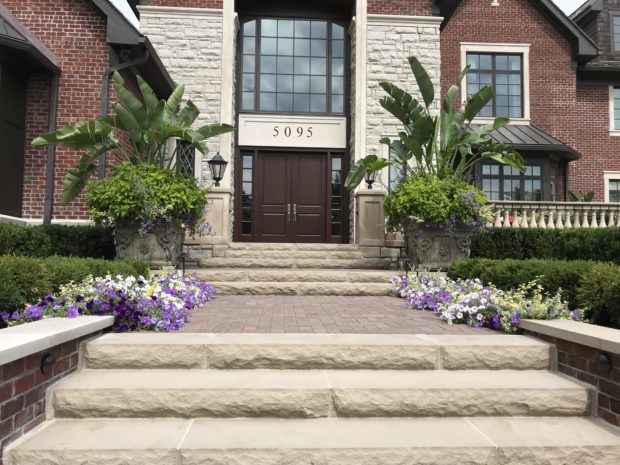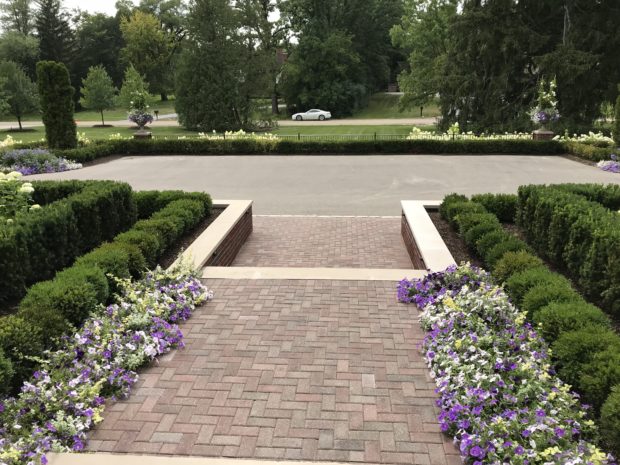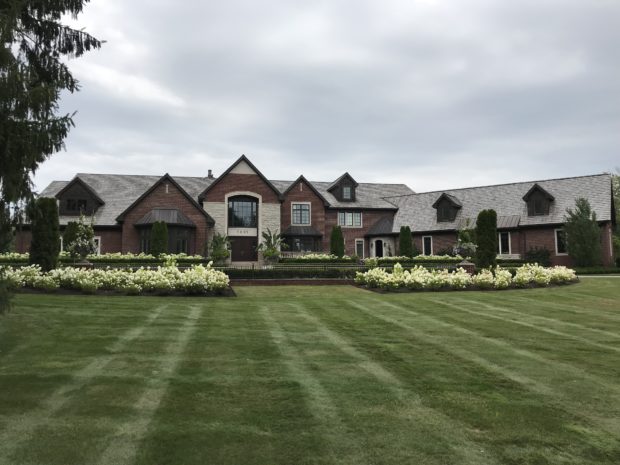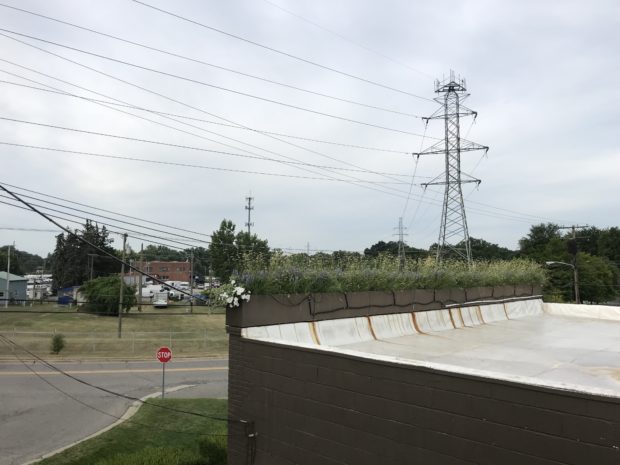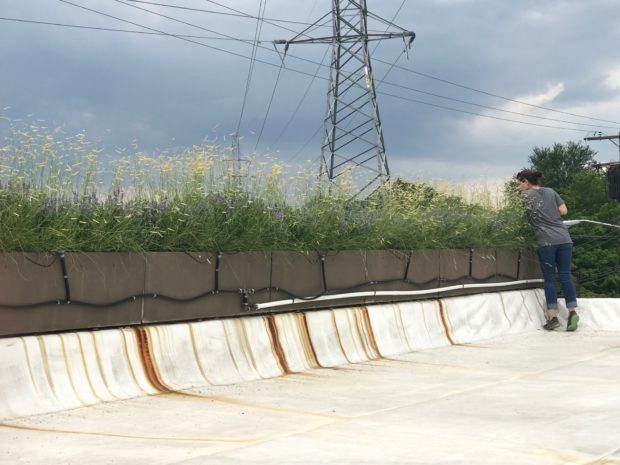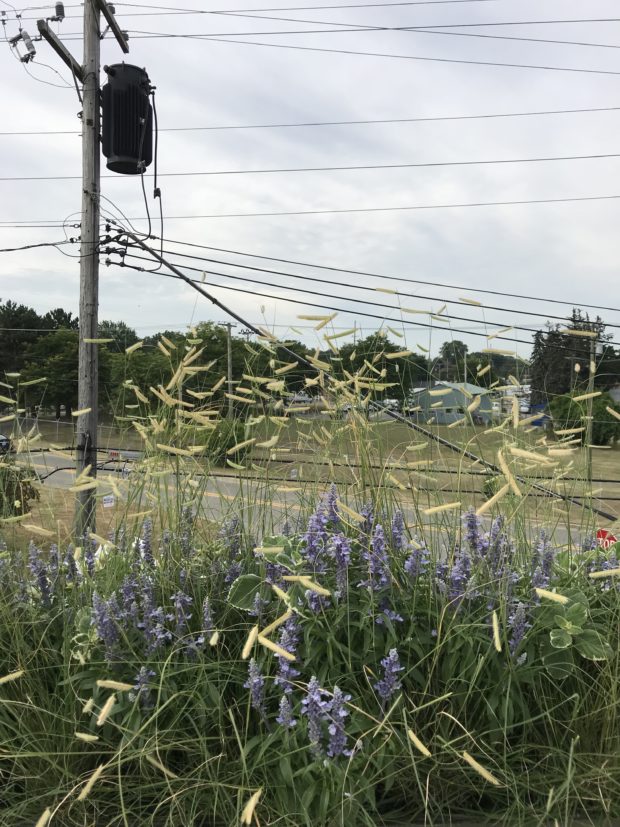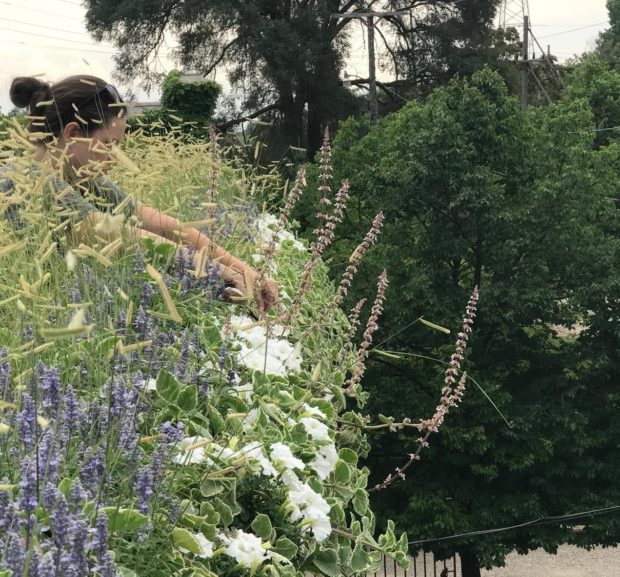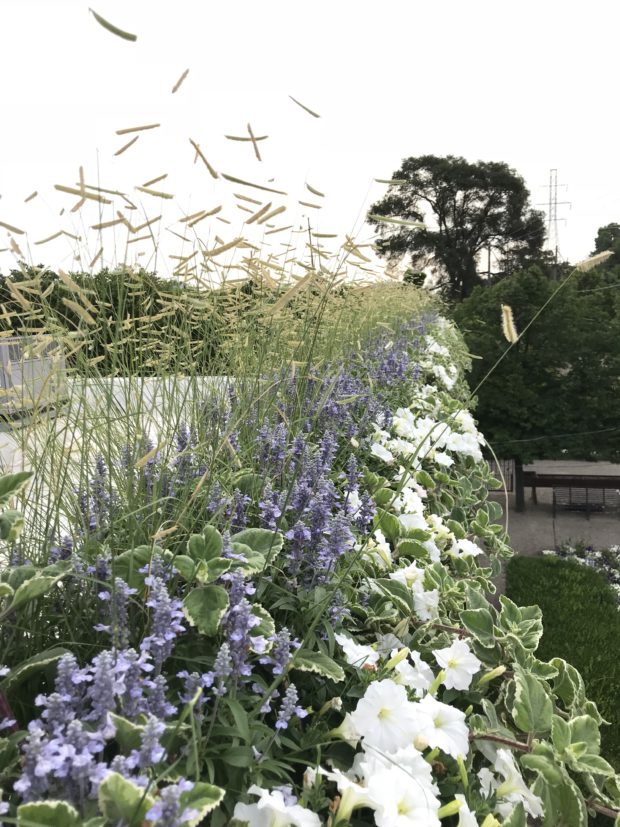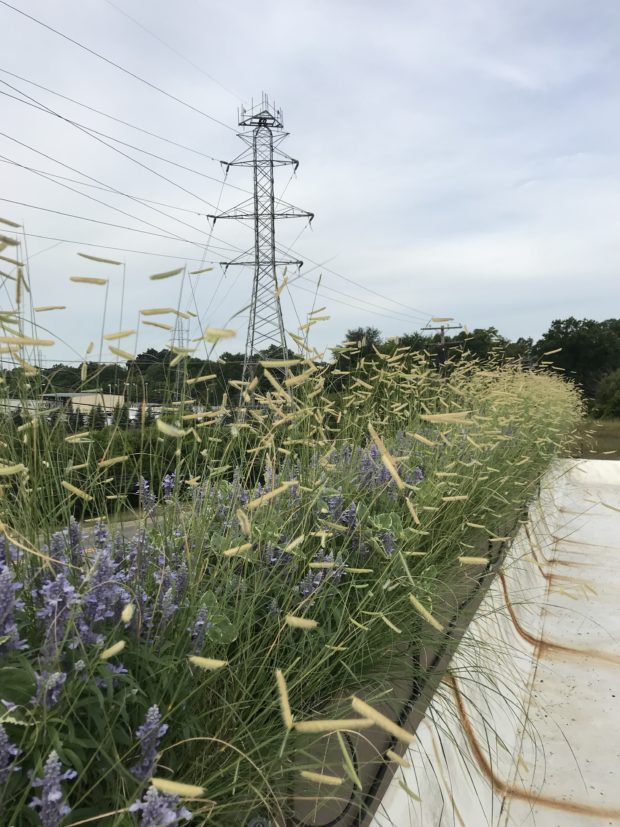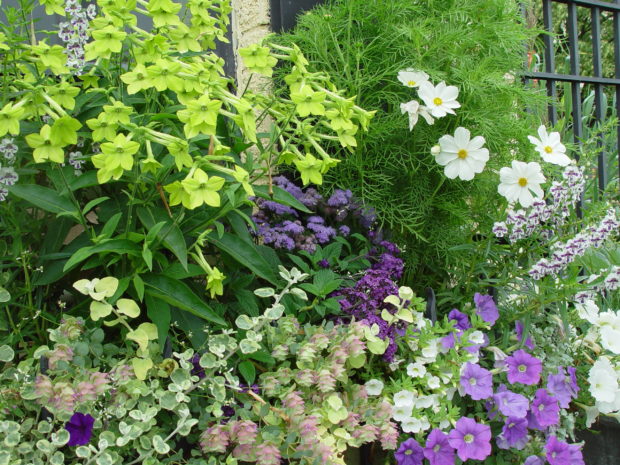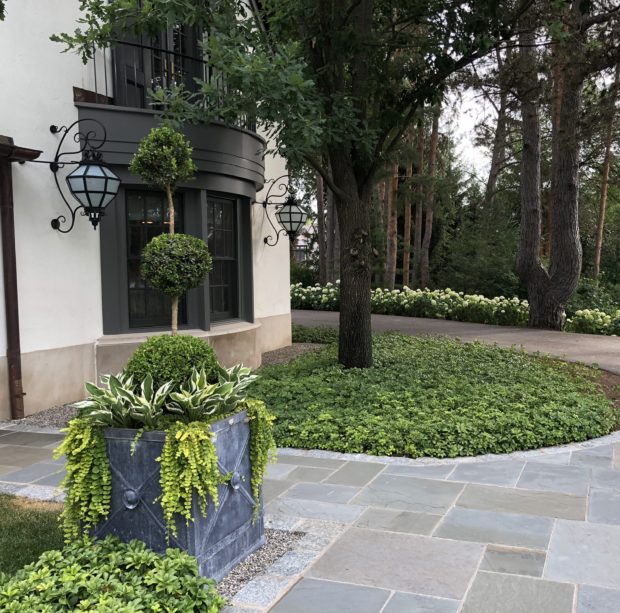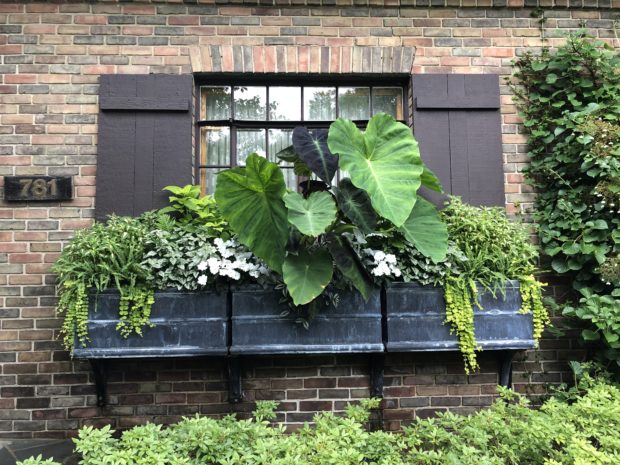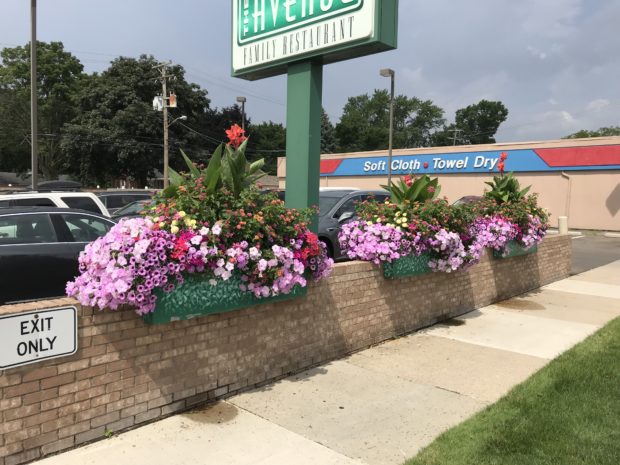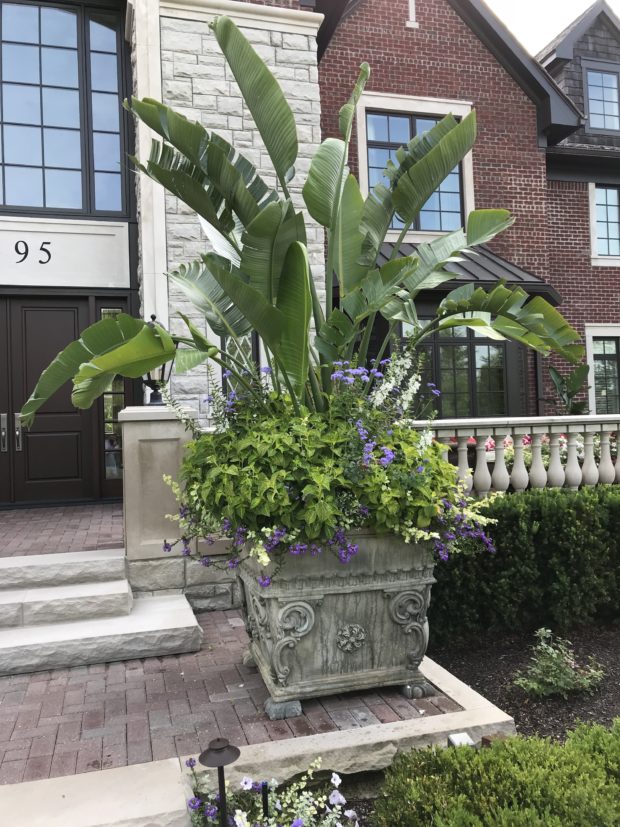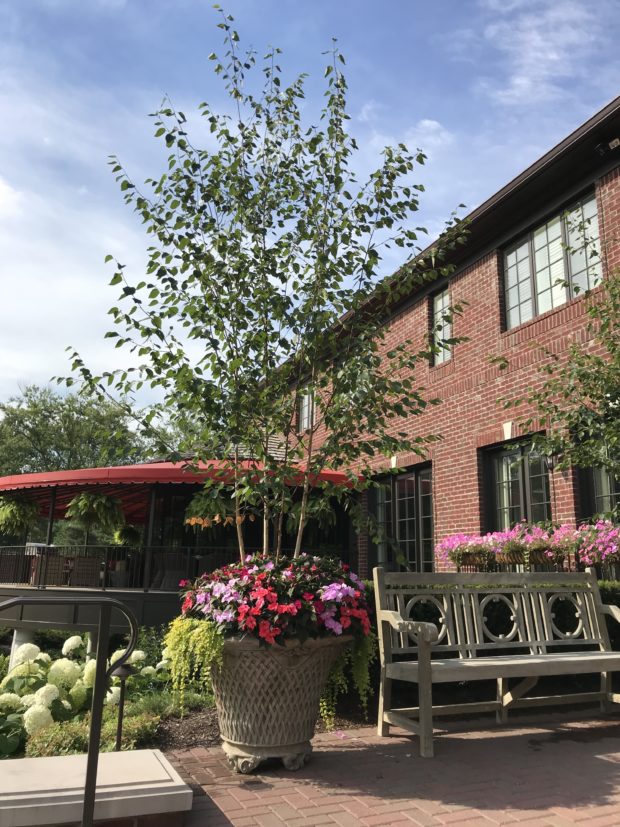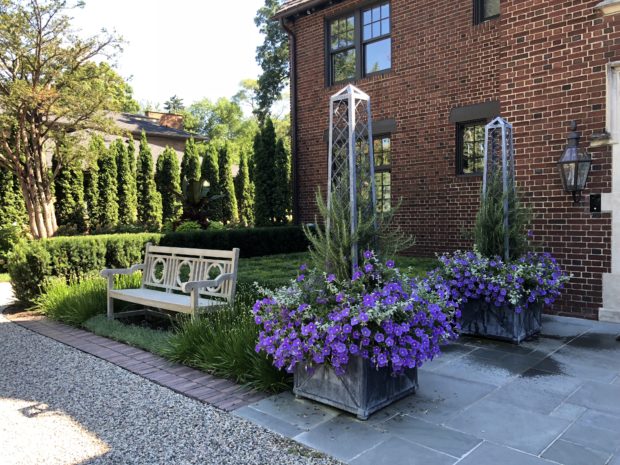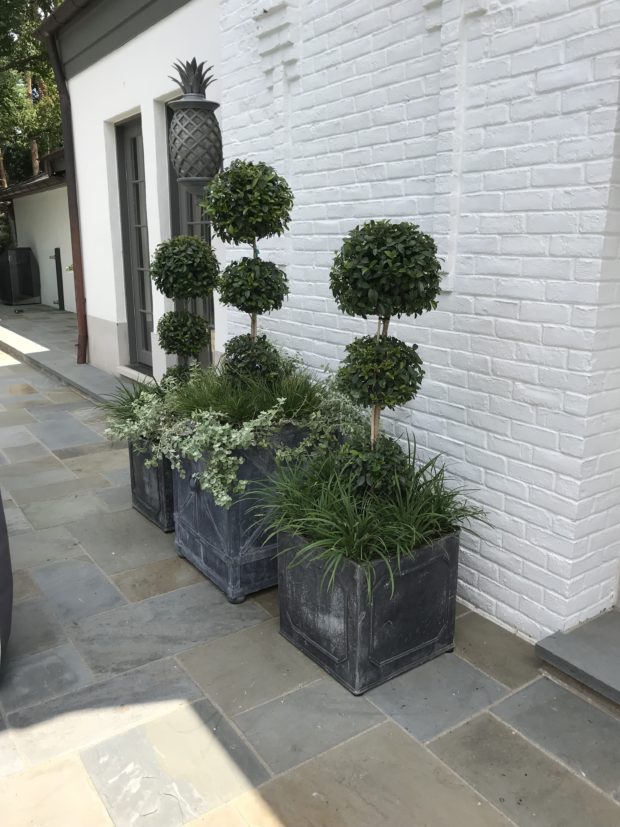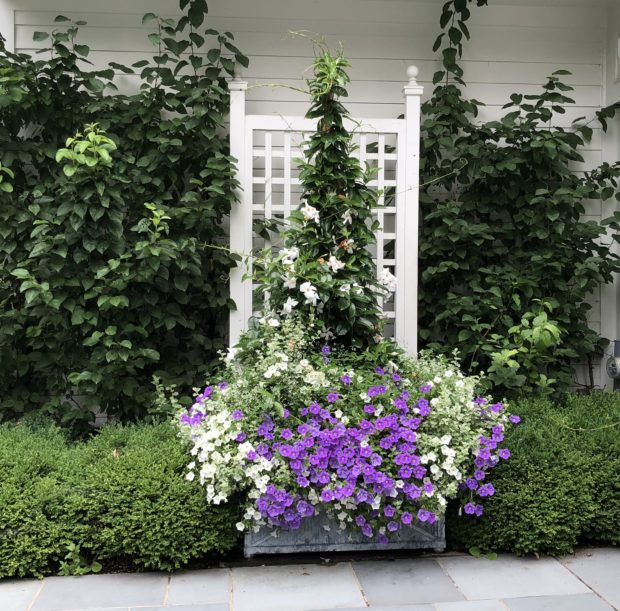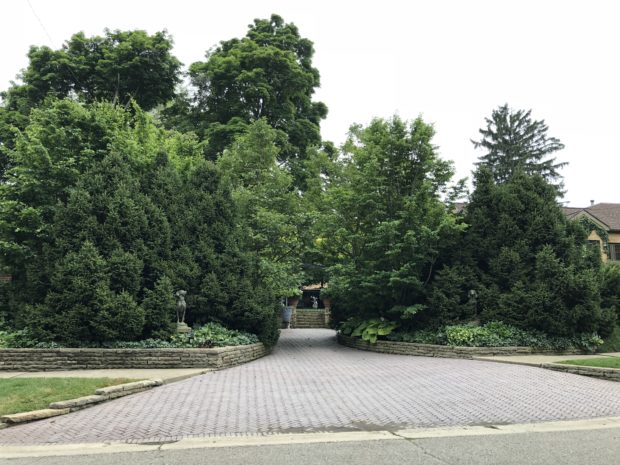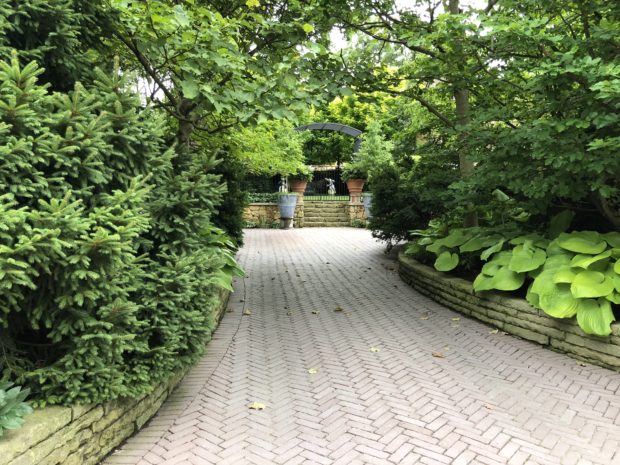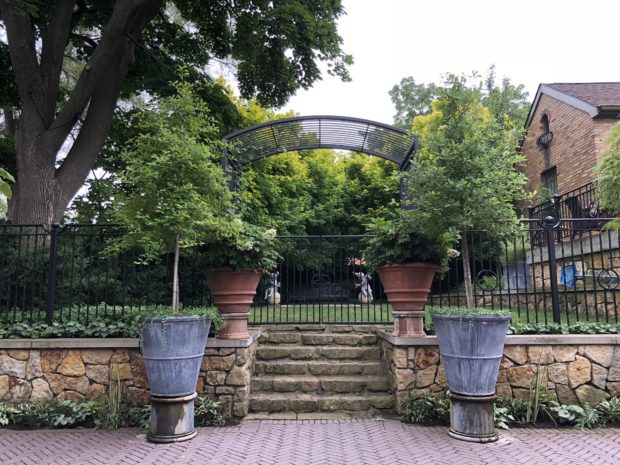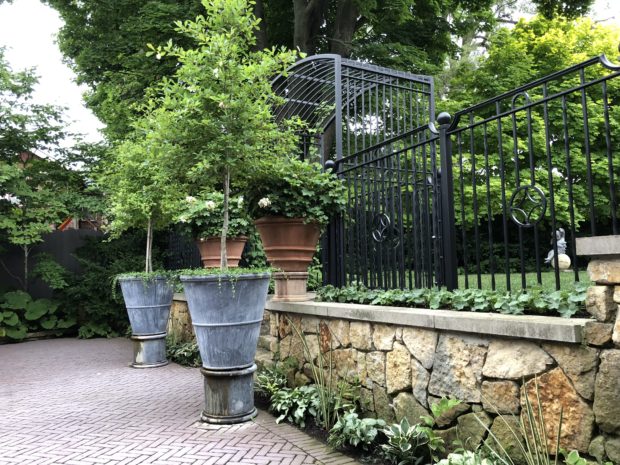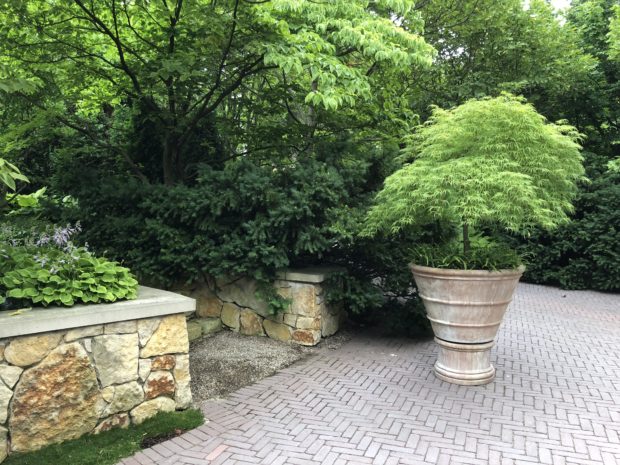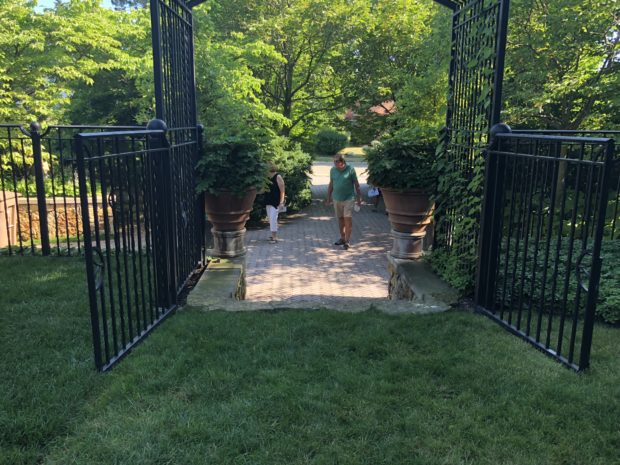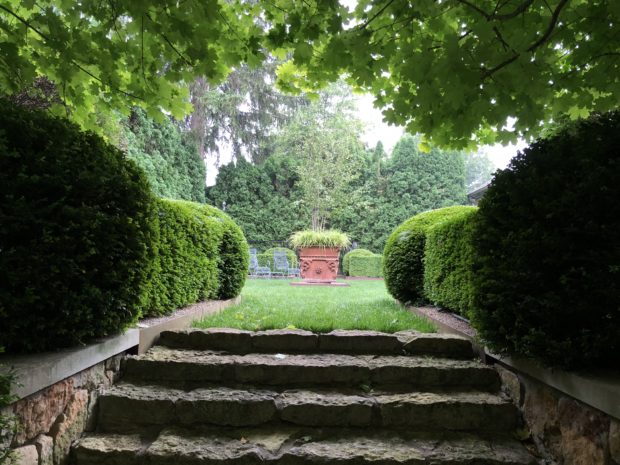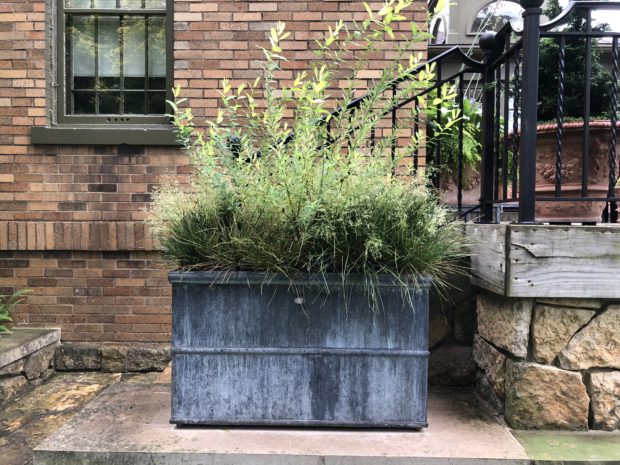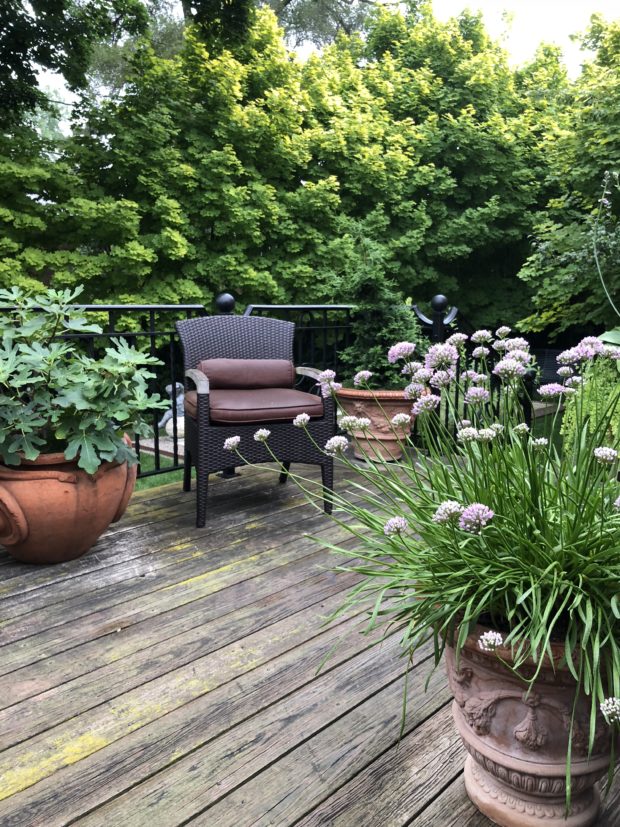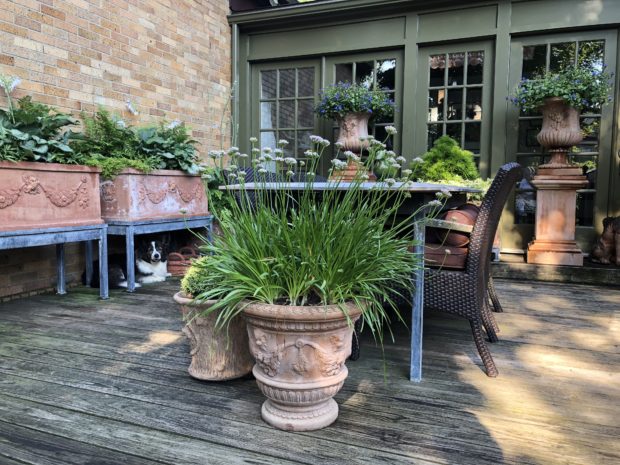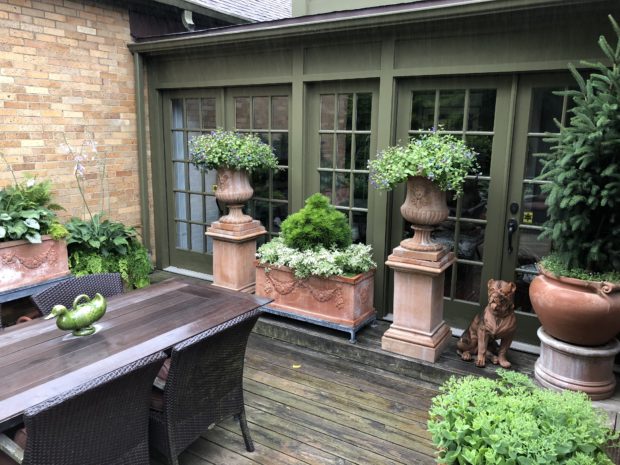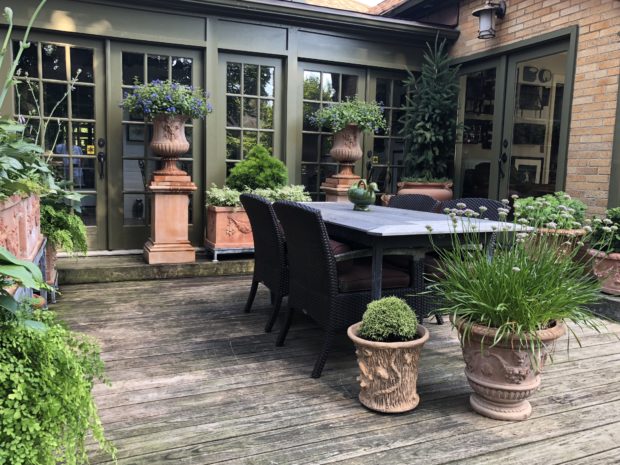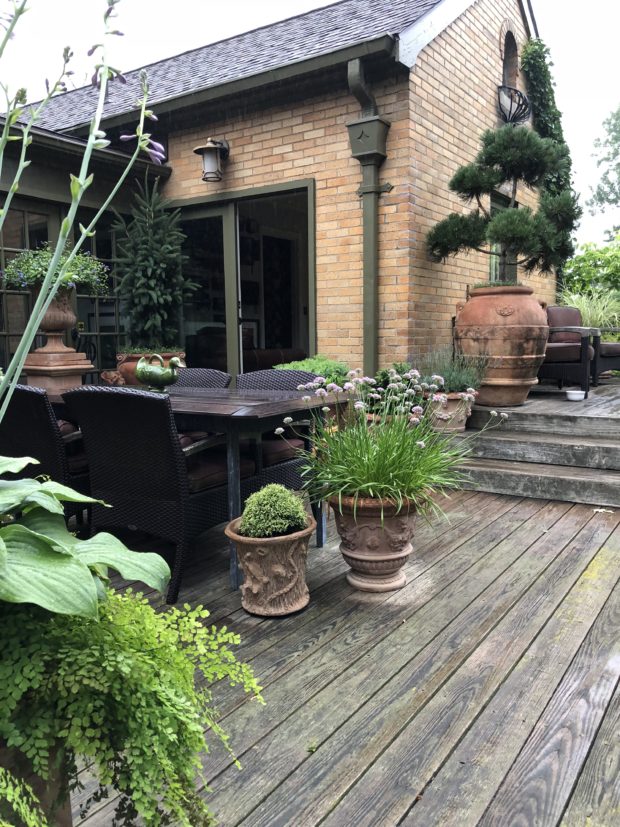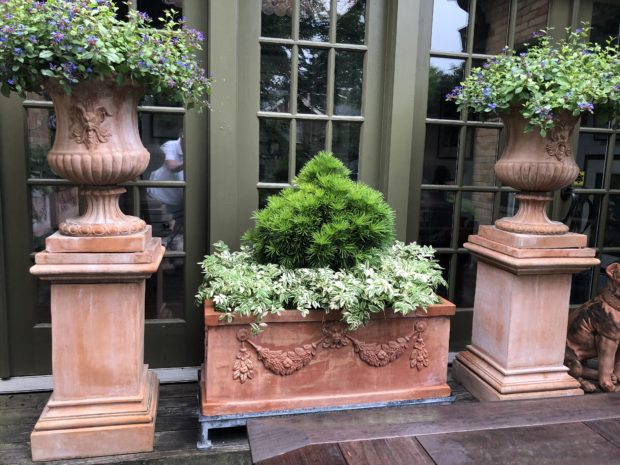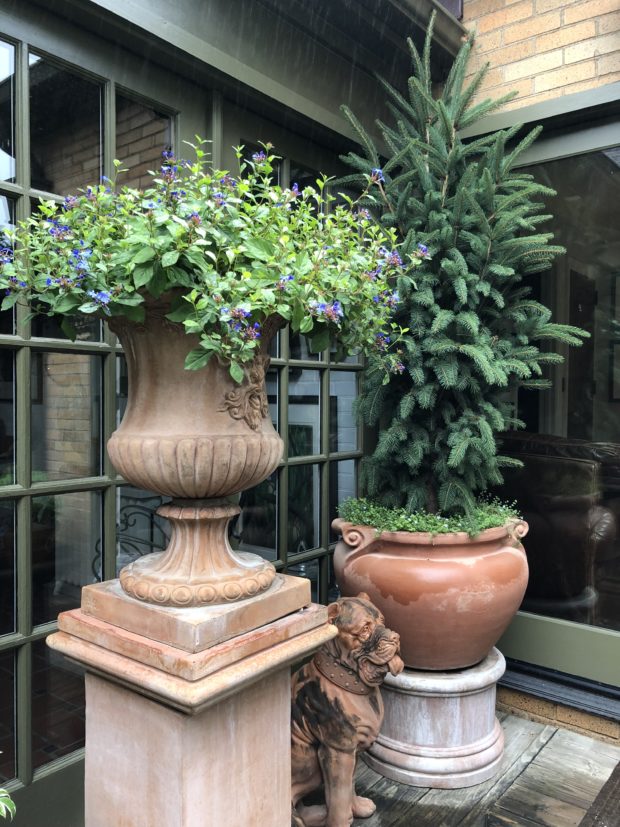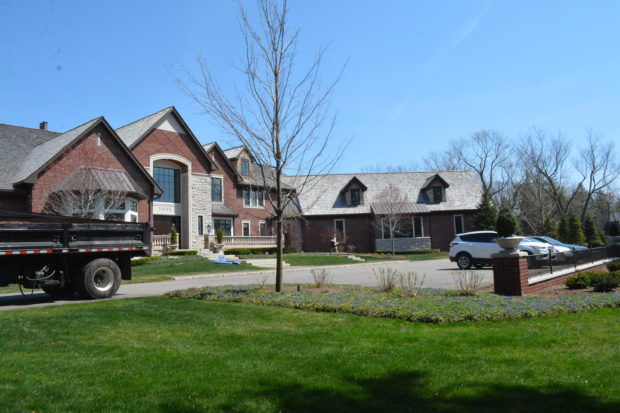 A client who built a new house was not so enamored with the landscape that resulted. I understand that what it means to be in that spot, as I have watched it happen plenty of times. Building a new house calls for lots of decisions, and incredible focus. The decision making on the landscape for a new house comes at a time when the client is exhausted from the effort of getting the interior spaces built and liveable. It is hard to maintain that concentration and energy to the very end of any project, much less a project of this scale. It can make sense to stand pat with a landscape until you have lived there long enough to figure out what you want from it. Once her house was built, she was interested in revisiting the landscape. I think she was surprised by how keen an interest she had in the out of doors. She walked out to meet me with a set of plans a year ago March.
A client who built a new house was not so enamored with the landscape that resulted. I understand that what it means to be in that spot, as I have watched it happen plenty of times. Building a new house calls for lots of decisions, and incredible focus. The decision making on the landscape for a new house comes at a time when the client is exhausted from the effort of getting the interior spaces built and liveable. It is hard to maintain that concentration and energy to the very end of any project, much less a project of this scale. It can make sense to stand pat with a landscape until you have lived there long enough to figure out what you want from it. Once her house was built, she was interested in revisiting the landscape. I think she was surprised by how keen an interest she had in the out of doors. She walked out to meet me with a set of plans a year ago March.
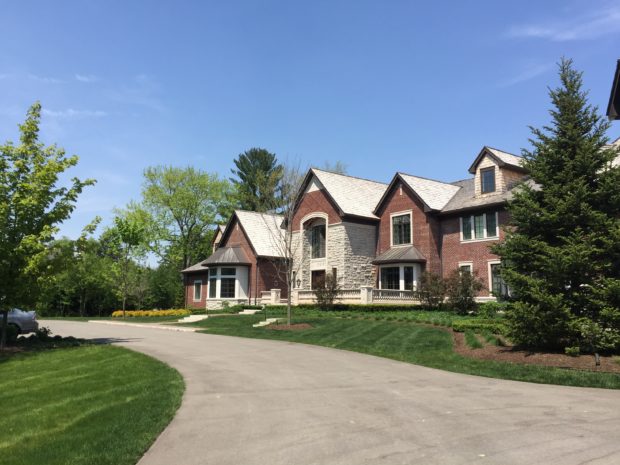 The landscape in place was simply not to her taste. She wanted a much more formal design, with plantings in multiple layers. She wanted some punctuation with less formal elements, like roses and hydrangeas. I was fortunate in that she had spent a good deal of time collecting pictures of landscapes she liked. I client who can articulate what they like in one way or another is a good client. To my mind, there were two issues that stood out. It is a very large house positioned very close to the driveway. And the grade dropped dramatically from the front door to the drive, and from the south end to the north. The house was uncomfortably perched on top of a hill. The driveway location was a given. I thought the landscape needed to provide an ample space for the house to sit, and create a sense of depth.
The landscape in place was simply not to her taste. She wanted a much more formal design, with plantings in multiple layers. She wanted some punctuation with less formal elements, like roses and hydrangeas. I was fortunate in that she had spent a good deal of time collecting pictures of landscapes she liked. I client who can articulate what they like in one way or another is a good client. To my mind, there were two issues that stood out. It is a very large house positioned very close to the driveway. And the grade dropped dramatically from the front door to the drive, and from the south end to the north. The house was uncomfortably perched on top of a hill. The driveway location was a given. I thought the landscape needed to provide an ample space for the house to sit, and create a sense of depth.
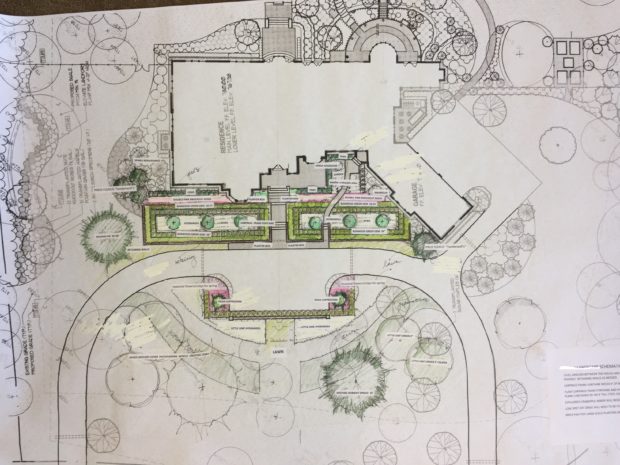 My plan called for a pair of long rectangular parterres on either side of the front walk. The right hand parterre would dead end into the angled garage wall. To my mind, this creates the illusion that the landscape came first, and the garage second. An additional landscape planting on the far side of the drive court would repeat that linear run of evergreens from the house side, and would include a large sweeping bed of Little Lime Hydrangea. But the most dramatic change would be in the installation of low brick retaining walls with limestone caps. These walls would enable a flat space in front of the house, upon which a formal landscape could be built.
My plan called for a pair of long rectangular parterres on either side of the front walk. The right hand parterre would dead end into the angled garage wall. To my mind, this creates the illusion that the landscape came first, and the garage second. An additional landscape planting on the far side of the drive court would repeat that linear run of evergreens from the house side, and would include a large sweeping bed of Little Lime Hydrangea. But the most dramatic change would be in the installation of low brick retaining walls with limestone caps. These walls would enable a flat space in front of the house, upon which a formal landscape could be built.
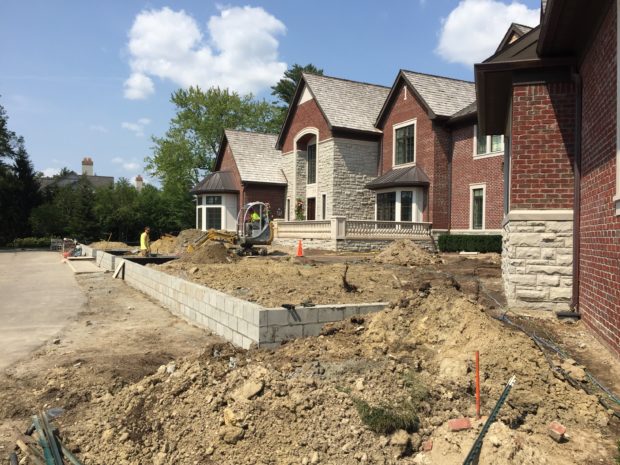 It is tough to spot those walls in the drawing, but this construction picture explains it. I very rarely design projects that we do not build, but my schedule was already booked out for quite some time. Her landscape and maintenance contractor is a very well respected company that I was confident would build the project with the same care and precision that I would. I was also interested in her interest and commitment to a beautiful landscape. So I took on the design portion, and turned the plans over to her contractor. I actually was surprised to find how much I liked having a project that I could watch come to life, without having to participate except in an advisory way. Schecter Landscaping did a terrific job of the layout, construction and planting.
It is tough to spot those walls in the drawing, but this construction picture explains it. I very rarely design projects that we do not build, but my schedule was already booked out for quite some time. Her landscape and maintenance contractor is a very well respected company that I was confident would build the project with the same care and precision that I would. I was also interested in her interest and commitment to a beautiful landscape. So I took on the design portion, and turned the plans over to her contractor. I actually was surprised to find how much I liked having a project that I could watch come to life, without having to participate except in an advisory way. Schecter Landscaping did a terrific job of the layout, construction and planting.
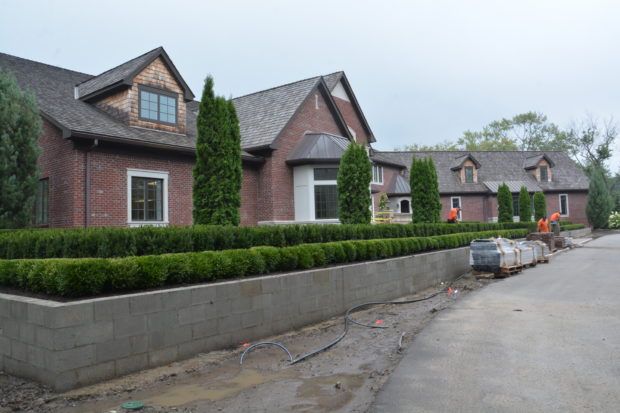 I did go by on occasion, and I did draw some of the smaller areas with greater detail that I would have were I doing the installation. But all in all, I was delighted having a design only role. I took my crews several times to see the progress on the installation. The retaining wall on the lower left in the above picture is almost 3 feet tall. The house no longer feels like it is sliding down a hill.
I did go by on occasion, and I did draw some of the smaller areas with greater detail that I would have were I doing the installation. But all in all, I was delighted having a design only role. I took my crews several times to see the progress on the installation. The retaining wall on the lower left in the above picture is almost 3 feet tall. The house no longer feels like it is sliding down a hill.
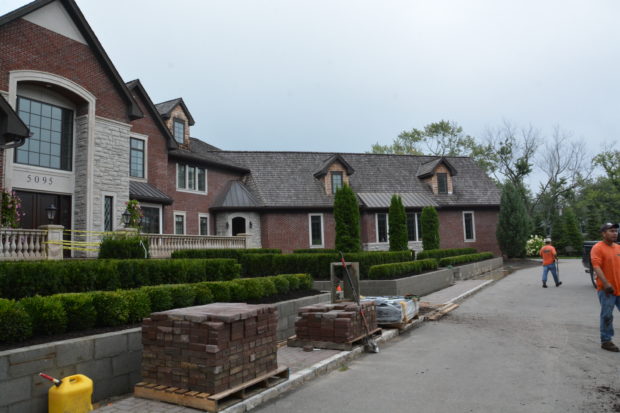 Once the block wall was up, the planting was able to proceed. I like the preponderance of evergreens in the front, as the landscape will read every month of the year. The house has a number of complex shapes and angles, so the locations of the vertical arborvitae were determined by the shape and size of the parterres. Those trees are far enough away from the house that they do not obstruct views from the inside out.
Once the block wall was up, the planting was able to proceed. I like the preponderance of evergreens in the front, as the landscape will read every month of the year. The house has a number of complex shapes and angles, so the locations of the vertical arborvitae were determined by the shape and size of the parterres. Those trees are far enough away from the house that they do not obstruct views from the inside out.
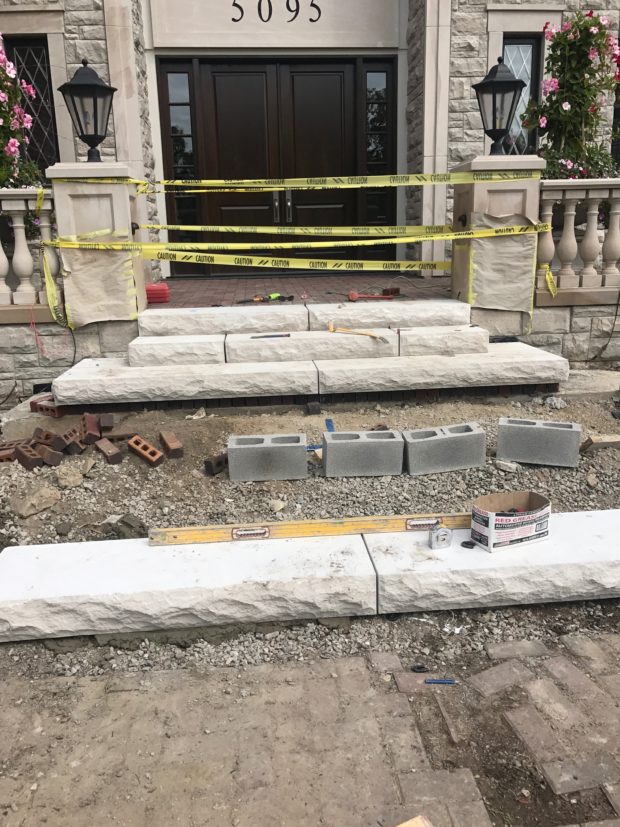 The steps were replaced with rock faced limestone slabs, and the existing paver bricks were taken up and reset.
The steps were replaced with rock faced limestone slabs, and the existing paver bricks were taken up and reset.
 The evergreens read just as well from the house side as they do from the driveway. The empty space on the right in this picture eventually got 48″ by 48″ brick landings for a pair of large pots. The rest of the space has a single row of roses.To the bottom left is the walkway and steps which bisect the right hand parterre, and lead to the side door entrance.
The evergreens read just as well from the house side as they do from the driveway. The empty space on the right in this picture eventually got 48″ by 48″ brick landings for a pair of large pots. The rest of the space has a single row of roses.To the bottom left is the walkway and steps which bisect the right hand parterre, and lead to the side door entrance.
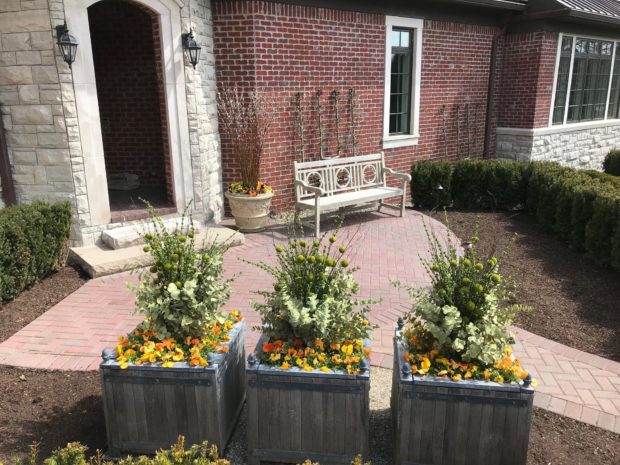 The walk to the side door culminates in a small radiused terrace, large enough for a bench and a pot. The trio of wood boxes sit in a bed, which now has been planted with a collection of small stature summer blooming perennials.
The walk to the side door culminates in a small radiused terrace, large enough for a bench and a pot. The trio of wood boxes sit in a bed, which now has been planted with a collection of small stature summer blooming perennials.
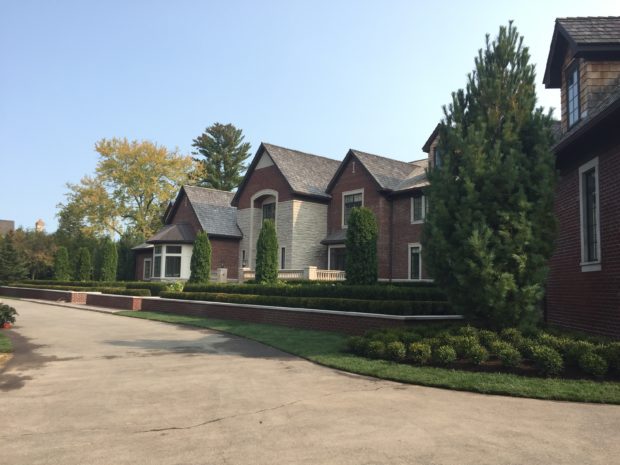 All of the planted elements of the landscape were in place last summer. She was very pleased with the outcome, and so was I. We did install a collection of pots, which we planted both for fall and winter. But it would take a year before she would see anything of the hydrangeas.
All of the planted elements of the landscape were in place last summer. She was very pleased with the outcome, and so was I. We did install a collection of pots, which we planted both for fall and winter. But it would take a year before she would see anything of the hydrangeas.
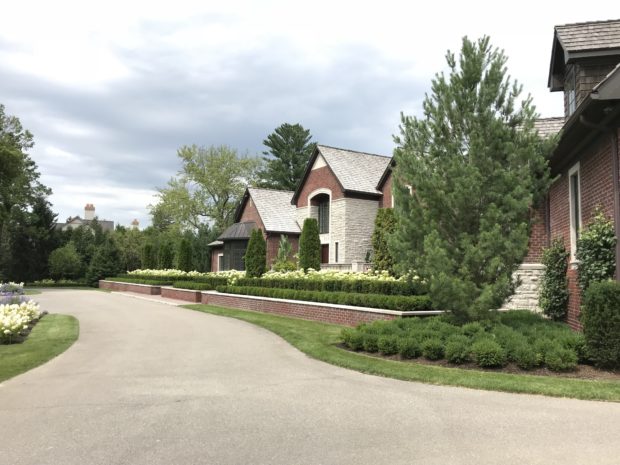 They came in to bloom just a short time ago. The parterres are planted with hydrangea “Incrediball” – one of her favorite varieties. The opposite side of the drive is planted with Little Lime hydrangeas. It is already possible to see that the landscape has multiple layers.
They came in to bloom just a short time ago. The parterres are planted with hydrangea “Incrediball” – one of her favorite varieties. The opposite side of the drive is planted with Little Lime hydrangeas. It is already possible to see that the landscape has multiple layers.
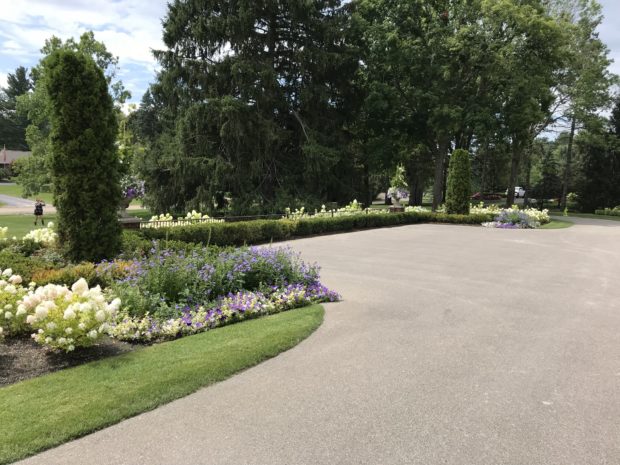 The car park is flanked by 2 rectangles of ground reserved for seasonal plants. Elements of the landscape from the house side are repeated here, so the overall volume of landscape exceeds the volume of paving.
The car park is flanked by 2 rectangles of ground reserved for seasonal plants. Elements of the landscape from the house side are repeated here, so the overall volume of landscape exceeds the volume of paving.
 It is great fun to be at a this point with a big landscape project. And even more satisfying to have a client who is happy with the outcome.
It is great fun to be at a this point with a big landscape project. And even more satisfying to have a client who is happy with the outcome.

